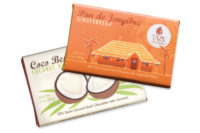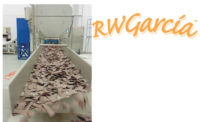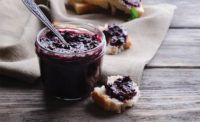Naturally Good
Armed with a unique identity, special appeal and growing acceptance, organic confections reach out to the mainstream.
These days, the product
array and distribution of organic confections mirrors that of conventional
candy. New organic confections have adopted mainstream candy forms and
flavor profiles.
| Organic* Confectionery Sales 2004 | ||
| Category | $ Sales(in millions) | Percent growth |
| Chocolate Candy | $13.8 | 67.3% |
| Other Candy | $2.1 | 17.7% |
| Individual Snacks | $3.2 | 2.2% |
| Gums & Mints | $.8 | 18.7% |
| Total Candy and Individual Snacks | $19.9 | 43.9 % |
| *Organic certified with 70% organic ingredients. Source: SPINS | ||
For children, there are organic lollipops, gummies,
licorice, peanut butter cups, hard candies and much more. For
discriminating chocolate lovers, there is an assortment of premium bars,
including single-origin varietals. Organic mints and snack/energy bars are
available as well.
Imperatives
The federal government’s National Organic
Standards program boosted consumer confidence in organic products when it
clarified product labeling and provided a special USDA logo to designate
qualifying products two years ago. Today 54 percent of shoppers have
sampled organic products, and 10 percent consume them on a weekly basis.
Marketing
Organic snacks offer parents healthy choices for their
children. The health benefits of dark chocolate also help boost sales.
Consumers view organic products as premium items, so
delivering on product quality and flavor is critical. A gourmet positioning
makes sense. Other consumer considerations include organic’s benefits
both for their health and for the environment.
The organic confectionery market (candy, snacks, and
energy bars) grew 50 percent to $42.9 million last year, up from 20 percent
growth the previous year.
Seasonal and novelty offerings are among the organic
candy subsets that are starting to play a bigger role, as are organic items
that also carry the “fair trade” banner.
What is more, the quality of organic products has
improved significantly, thanks to the use of better quality ingredients and
wider sources of supply.
Outlook
As a sign that organic products are increasing their
share in conventional food sales channels, 44 percent of organic snack
foods moved through mass market grocery stores, followed by 23 percent
through natural foods independent grocery stores and 22 percent through
natural foods grocery chains. With sales of organic products up 20 percent,
major supermarket chains have decided to jump into this market with
private-label products, thereby cutting into the market share of the
national organic brands.
So what does the future hold for organic confections?
As long as consumers associate improved quality with organic, chances are
they will continue paying a premium for that cachet.



